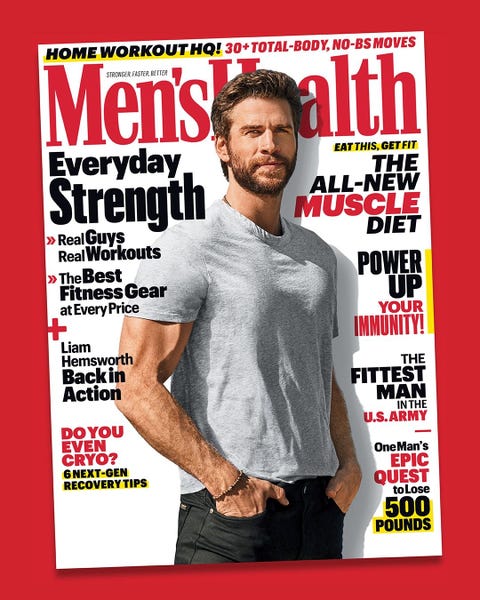
“All strength needs to be built upon a solid foundation,” says Athlean-X founder Jeff Cavaliere, C.S.C.S. “If you’re simply chasing numbers, but you’re not necessarily building them upon a solid foundation, eventually it’s going to crack… If you can squat 600 pounds, but you feel like a 600-year-old man the day after you do it, it’s not really serving its purpose.”
In his latest video, Cavaliere outlines five strength areas that are crucial to improving your lifting performance, that you can work on at home during quarantine to prep yourself to return to a fully-equipped gym—or really, anytime you want to improve your abilities.
Straight Arm Scapular Strength
This is especially important when performing movements like the deadlift, as it will help you to perform the move with the correct form, and maintain a stable, straight bar path. But you don’t need access to a barbell to work on your straight arm scapular strength; you can simply throw a band over a pullup bar (or any other overhead anchor—just not a coat hook) and do straight arm pushdowns, focusing on keeping the elbows locked.
If you don’t have a band or pullup bar, you can engage your arms in a similar way in the sliding bodyweight pulldown, using just a towel on a slippery floor. “The principle is the same,” says Cavaliere. “Can you move your body through space, with that rigid arm setup, not sacrificing stability?”
Horizontal Pressing Stability
Can’t wait to hit the bench press when you get back into the gym? Then you’ll want to give yourself a solid, stable basis. Cavaliere recommends training your delts in a couple of pushup variations; the pushup saw mimics the same range of motion as the bench press, while the extension involved in the planche pushup translates to the close grip bench press.
Alternatively, you can improve your stability by training your back and shoulders. The back widow is a bodyweight move which engages your back muscles, but also requires you to use your core and glutes to maintain good form.

Men’s Health
Subscribe to Men’s Health
SHOP NOW
Thoracic Extension
A common pitfall in squats, according to Cavaliere, is an inability to maintain proper positioning of the upper body. “I don’t care if you’re doing the low bar squat or the high bar squat, you still need to have good thoracic extension to maintain the proper bar path,” he says. To avoid the kind of posture curving that might “lead to disaster,” throw that band over the pullup bar again and do some overhead banded walkbacks. By raising your arms over your head, you’re automatically going into and maintaining thoracic extension. “Being able to maintain that nice rigid upright torso is what’s being worked here,” says Cavaliere. Once you’re in that position, then go into an overhead squat.
No equipment? A simple alternative is the wall slide: stand with your back against a wall and try to raise your arms higher and higher at your sides against the wall, engaging the posterior chain and rotator cuff in the process. The temptation here will be to lean forward and away from the wall to continue the motion, but the key is to simply go as far as your body will allow, and work on that.
Hip Strength
Rotation of the hips comes into play in all manner of exercises, but is not necessarily an area we often think about training. “You’ll be surprised at how weak you probably are here,” says Cavaliere.
He recommends a banded move called the clam shell which focuses on opening and closing the legs without engaging the torso, and the slide lunge, a bodyweight move where you simple let one leg drift out to the side, which can also incorporate a dumbbell depending on the strength in your adductor muscles. The hip drop, meanwhile, is a simple move which engages the abductor muscles and contributes to the overall strength of the hips.
Shoulder Strength
If you’re planning on doing any kind of overhead pressing, then you shouldn’t be ignoring your shoulder stabilizers. You can do a number of variations of the face pull to work your back and shoulder muscles, and engage the lower traps with a high to low band pull apart.
A handstand pushup will also help to create the compression in your shoulders that you would have during a bench press, albeit without the same range of motion; you can step up the difficulty of this move by turning it into a wall walk, which requires considerable control as well as strength. Just make sure that you don’t kick up until you’re able to do a standard handstand, first.
Source: Read Full Article